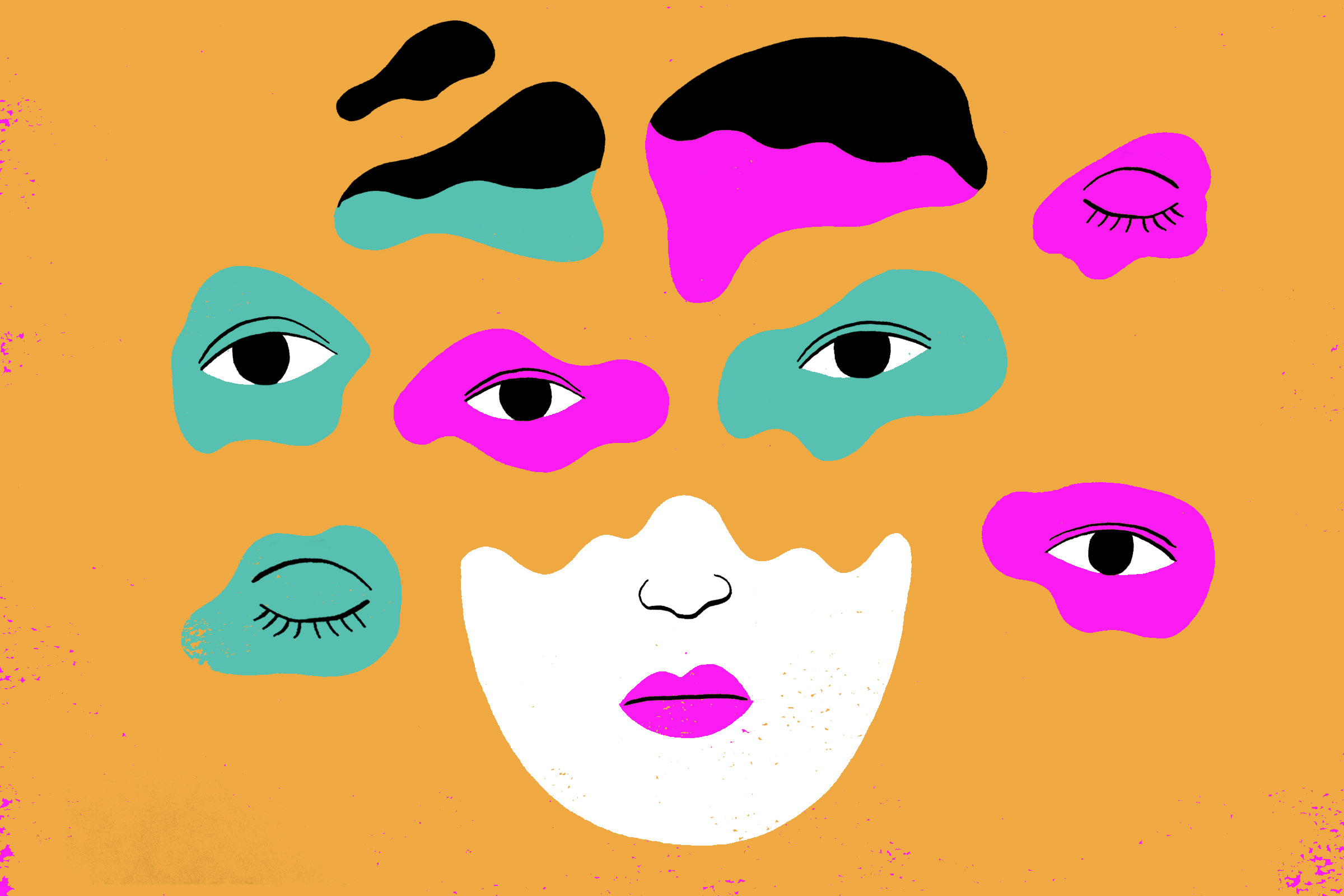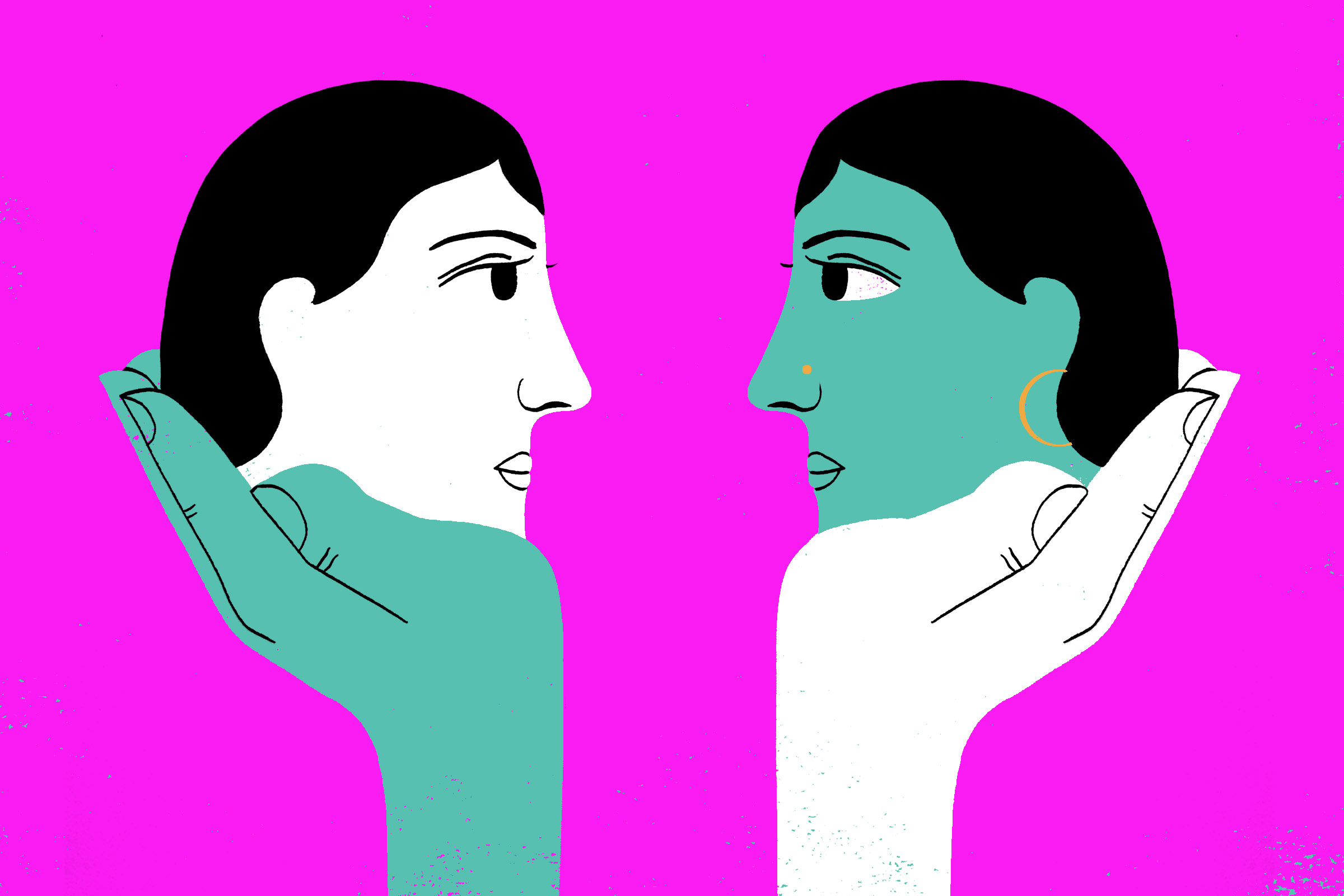Research shows that everyone has prejudices, whether they believe this of themselves or not. But with the right approach, you can overcome unconscious biases and promote equity for all.
As a Black woman working in Toronto’s Financial District, Barbara Yebuga quickly discovered the unspoken rules about her aesthetic. If she came to work with her hair natural, she might hear unsolicited comments. “What’s up with your wacky hair?” or the more passive “I like your hair better when it’s longer and straighter.” And if she wore something with an African print? “How risqué of you to wear that blouse!” Translation: Keep the bold motifs and colours for Employee Cultural Day.
Yebuga believes her employers were unaware that their comments conveyed cultural prejudices. They prided themselves on their diverse workforce—repeatedly asking her to be the face of their diversity campaigns. And the company followed inclusive recruiting policies and practices. But Yebuga noticed a pattern: The more she watered down her Blackness, the better co-workers received her.
How unconscious biases make or break careers
Even now, when Yebuga prepares for interviews, she has more to think about than strong references and a polished résumé. She carefully considers how to wear her hair—how much she will accentuate her African features and textures. When visiting Uganda, where her parents originate from, she noticed the women working in banks, government offices and local businesses wore a variety of hairstyles. “I envied their freedom to rock whatever style they wanted and still garner respect,” she says. “It weighs so much that how people perceive a non-white aesthetic in North America can make or break your career.”
It’s no longer socially acceptable to express racist, sexist, homophobic, transphobic, ableist, ageist or fatphobic views. Unfortunately, we still hold those views, to a greater or lesser degree, often without even realizing it. According to the Office of Diversity and Outreach at the University of California, these hidden values, known as unconscious bias, are “far more prevalent than conscious prejudice and often incompatible with one’s conscious values.” And race is not the only problematic area. We can have unconscious biases about sex, gender, age, ability, attractiveness and even employment status.

Challenging your own unconscious biases
No one is immune to holding unconscious biases—they’re a part of being human. What matters is what we do about them. “Implicit or unconscious bias happens when our brains make incredibly quick judgments and assessments of people,” says Mona Mitchell, president and CEO of AchieveBlue, an executive coaching company. Those judgements can translate into choices that hold back other people. “We don’t even know we’re doing it. But our backgrounds, personal experiences and societal stereotypes can all have an impact on the decisions we make and actions we take.” And these biases are pervasive. We all possess them—even people with avowed commitments to impartial judgment.”
The development of biases starts early, too. One 2014 study of primarily white American children showed that the kids in the study group exhibited a weak racial bias against Black people by age seven. By age 10, that bias was “strong and reliable.”
In fact, the research shows that even people who believe they have no prejudices make decisions based on stereotypes. For instance, a 2016 study found that résumés from Black and Asian-American candidates whose name or some other detail gave a clue to their cultural identity got fewer call-backs than résumés with no racial clues. That phenomenon is exactly why many people of colour feel compelled to resort to “résumé whitening.” They erase fundamental parts of who they are for a shot at getting a job they’re perfectly qualified to do.
How unconscious biases infiltrate every area of life
And unconscious bias is not just a work issue. Studies also show that heterosexual healthcare workers unconsciously favour heterosexual patients over LGBTQ+ patients. It’s no surprise then that LGBTQ+ patients have higher rates of physical and mental health concerns, ranging from asthma to cardiovascular disease to substance addiction; that queer women go for fewer pap tests in their lifetime; or that LGBTQ+ individuals are more likely than their heterosexual peers to delay or avoid necessary medical care.
What’s more, a November 2019 global study revealed that in every country examined—Canada included—both men and women are less comfortable about women being CEOs. (This despite the fact that women-run companies have been outperforming those with men at the helm.) Stephania Varalli, co-CEO at advocacy organization Women of Influence, responded to this disheartening news in a Toronto Star interview: “It goes back to kind of an unconscious bias of putting men in certain roles and women in certain roles, and that’s something that takes some time to change.”
Hiring practices to counter unconscious biases
While unconscious biases are clearly pervasive, we can do something about them. Some companies have introduced hiring practices and policies that eliminate the possibility of gender bias. For example, from the 1950s, many symphony orchestras introduced blind auditions. Musicians play from behind a screen to conceal their identity and gender. This means hiring decisions can be based solely on the merits of their performance. This practice led to a 30 percent increase in the hiring of women musicians between the 1970s and 1990s.

According to social psychology professor Nilanjana Dasgupta, who has studied implicit prejudice for more than a decade, we shouldn’t think about unconscious biases as hard-wired personality traits. Instead, they are “reflections of local environments and communities. Changes in local environments,” she adds, “produce corresponding changes in people’s implicit attitudes and beliefs.” Rather than deny our biases, in other words, we can start by owning them—then do something about them.
How to challenge your own unconscious biases
Mitchell agrees. She kickstarts changes in her clients’ thinking by using thought exercises to show how unconscious bias works. “We’ll say, for instance, ‘If we think about engineers, what’s the first thing that comes to your mind?’ Or we will [name] prominent figures and ask them the same question. They have to write down what they think in that first 10 seconds, and that’s when they start realizing. They [come into training] thinking they don’t have biases, but then they see that in fact they do.”
From there, Mitchell helps people understand why biases tend to develop—”for safety, security and control over our environment and the future,” she says—and they brainstorm ways to interrupt them from emerging.
Addressing unconscious biases in the workplace
As for Yebuga, after she had a difficult conversation with her higher-ups and HR about her experiences as a Black employee at the company, they invited her to hold unconscious bias training for her colleagues. It gave her an opportunity to start the conversation.
“What I was experiencing at work had been taking a toll on my mental health,” she says. “If I was going to start my healing process, I was going to have to speak up. I was fortunate to have a platform to educate others and myself. Gradually, other employees spoke up about their experiences, and I too examined my own unconscious biases.”
Eventually, Yebuga left that corporate job to become an educator who specializes in diversity and inclusion training for youth. She hopes her legacy at her former workplace will be that other employees with marginalized identities can focus simply on their jobs.
She believes the best way to dismantle these biases is to talk it out. “It really comes down to engaging with people that are not like you and really having honest conversations,” she says. “That means leaders have to create safe spaces where we can [admit] that we all have biases. It’s something we can’t run away from—we all need to do our part to dismantle them.”